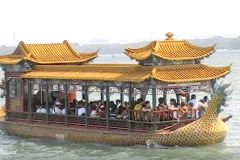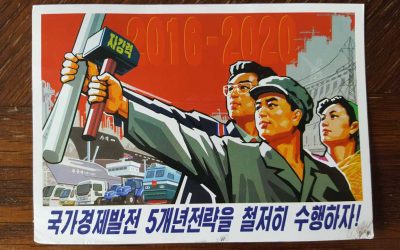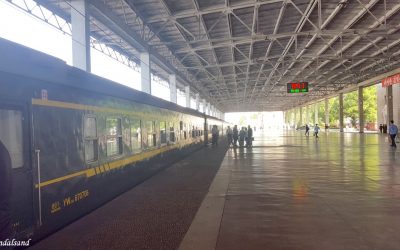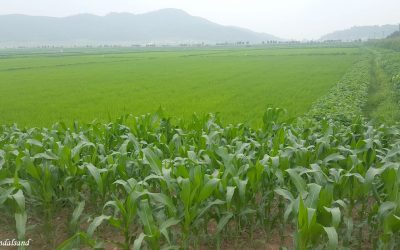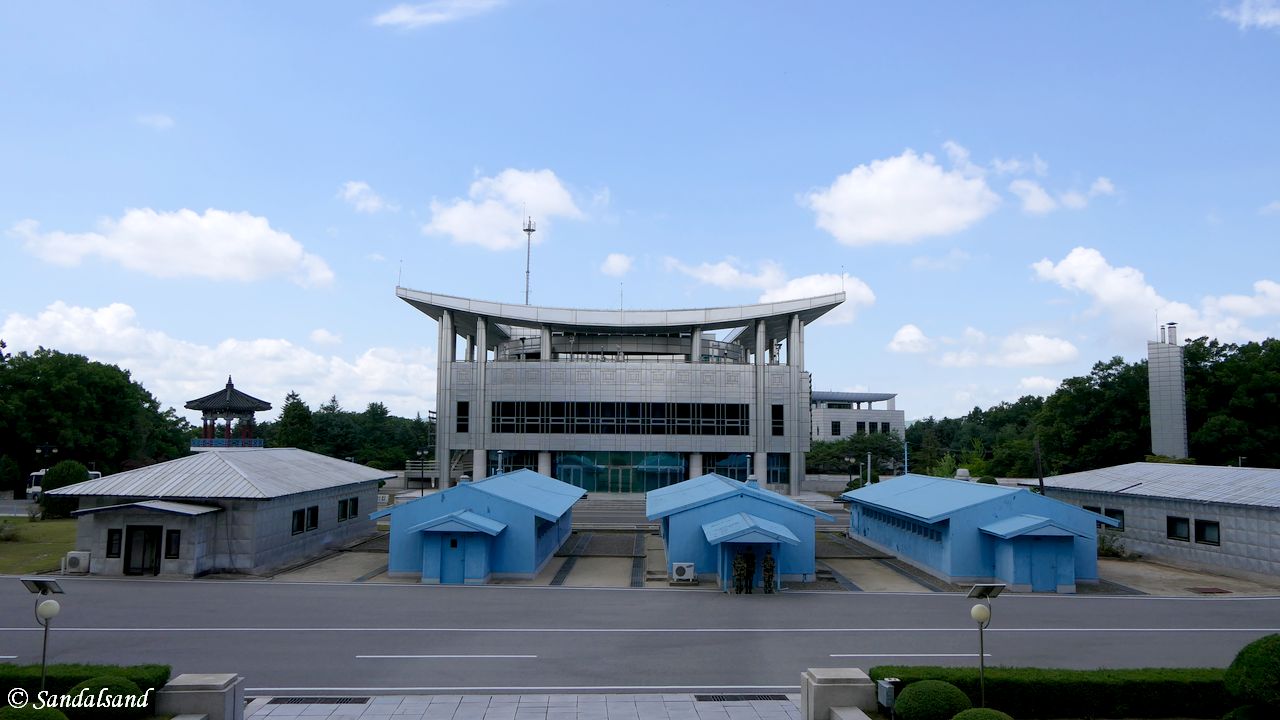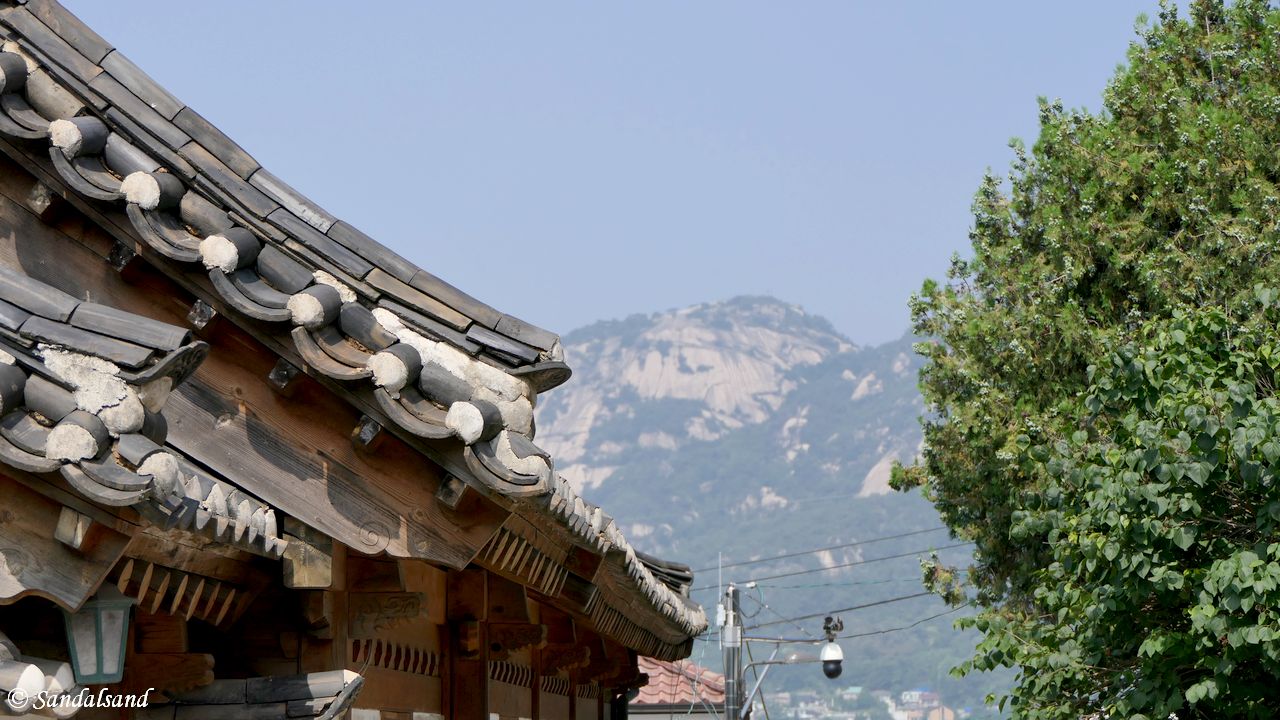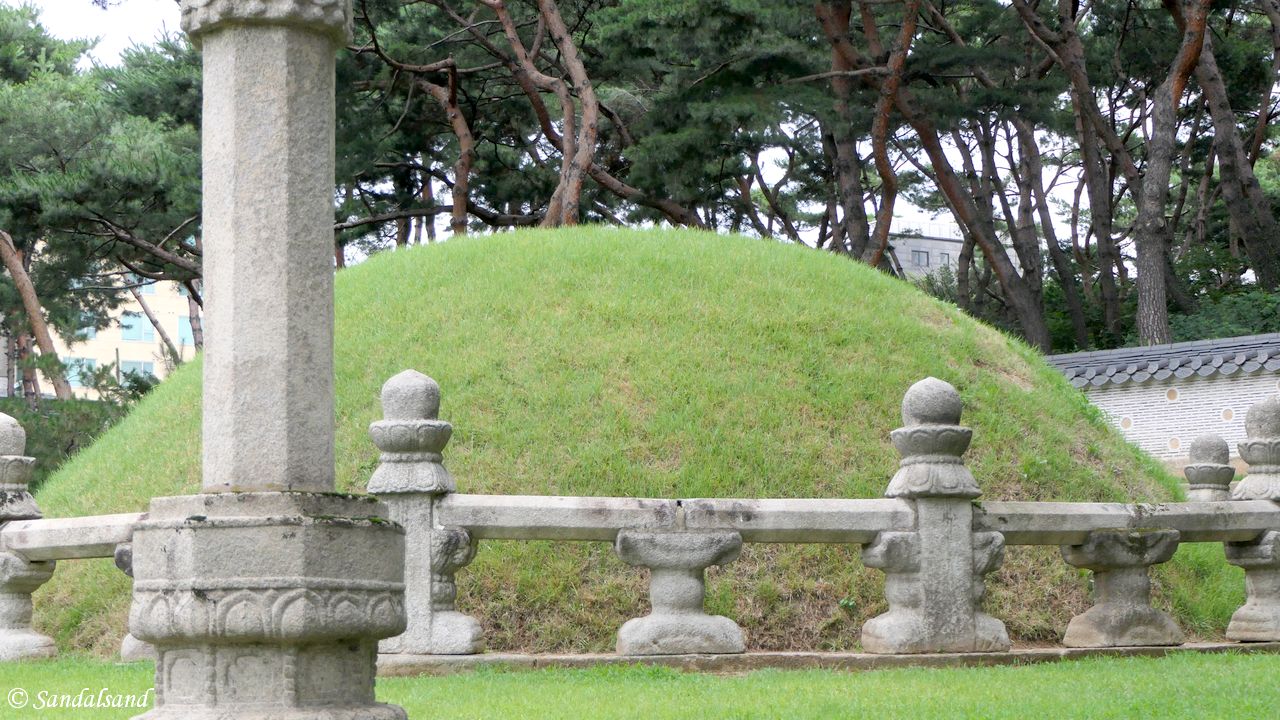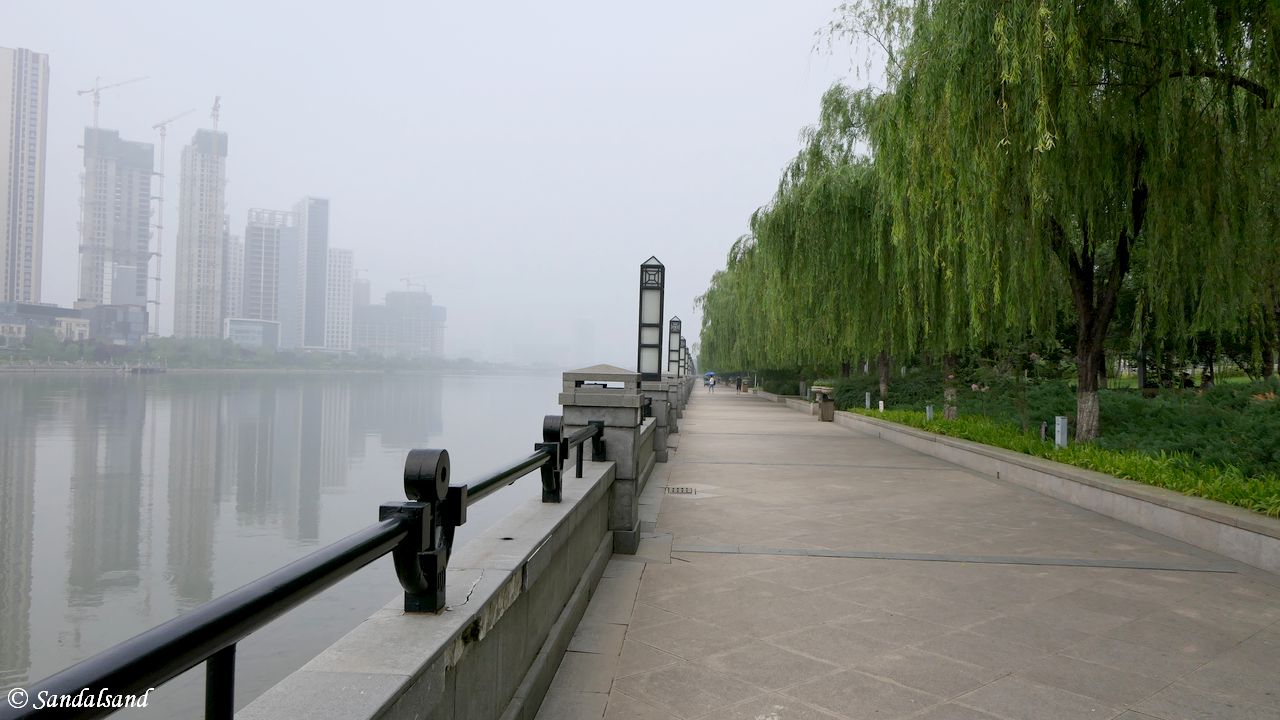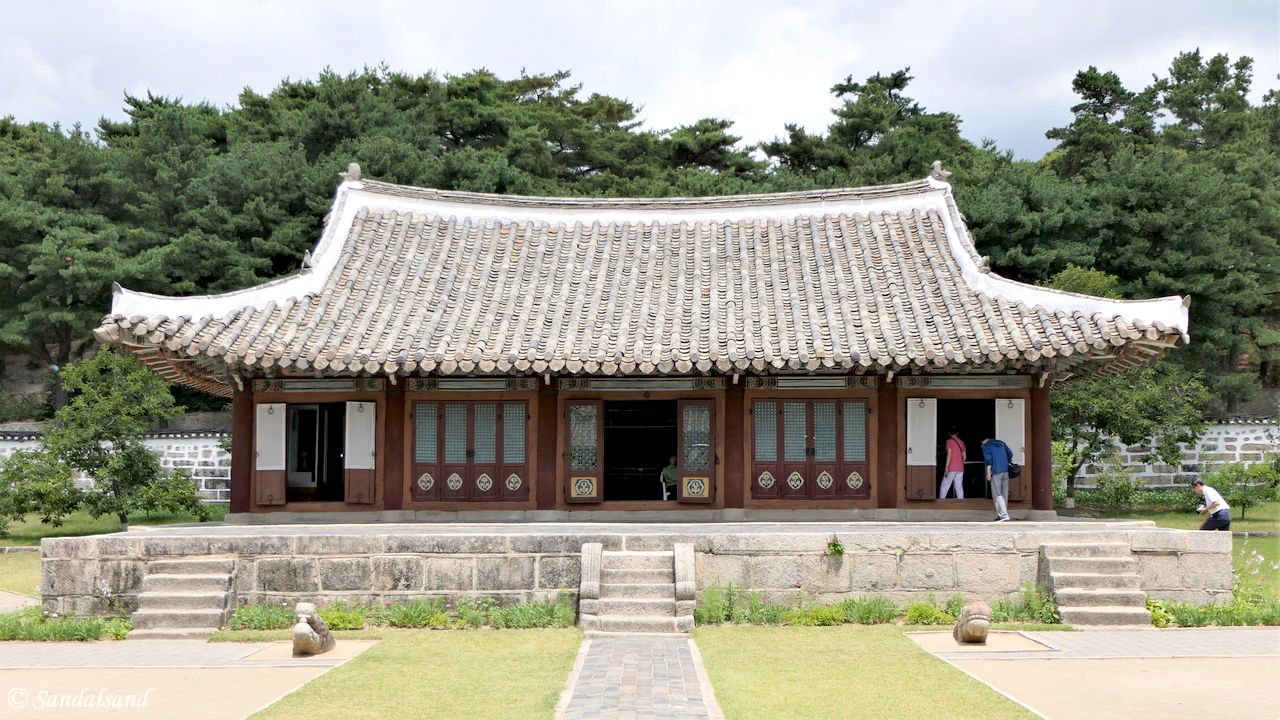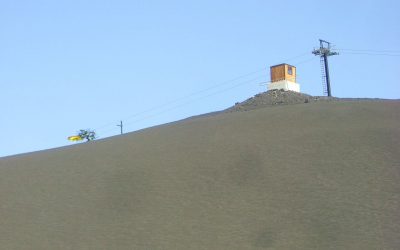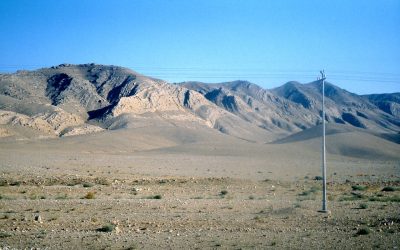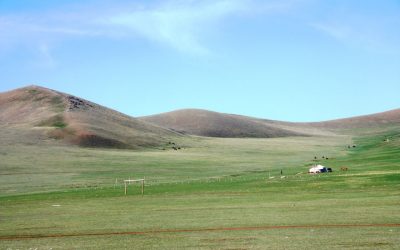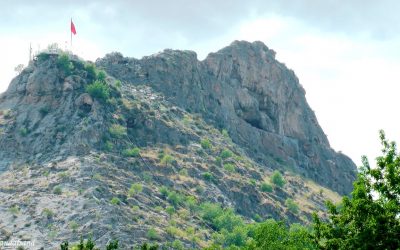Intro
States
Photos
Blog
Facts
Overall impressions
These women emerged from their houses at the Sera monastery in Tibet in 1985. They brushed their hair and aprons and asked us to take their pictures, so we did.
However, they were disappointed to learn that we didn’t have Polaroid cameras with instant processing and printing. They must have encountered or heard about tourists with such cameras before. No “travellers” had them, as I wrote about this scene many years ago.
In fact, this situation does not seem typical of East Asia in my opinion. People there are generally very up-to-date with technology. My impressions of this part of the world are certainly characterized by human curiosity and friendliness, combined with a traditional sense of hospitality. This holds true not only in remote places like Tibet and Mongolia but also in modern-day Japan.
An even stronger impression is the hectic way of life most East Asians lead. This is partly due to living in one of the world’s most densely populated regions, but I also believe there are cultural reasons for this.
To counteract this, it’s no surprise that the region has developed religious philosophies emphasizing deep meditation and mental balance. Today, East Asian society faces many challenging balancing acts: old and new; traditional and modern; work and leisure; manual and mental; stagnation and growth; poverty and prosperity; collectivism and individualism.
Countries
China | Japan | Kazakhstan | Kyrgyzstan | Mongolia | North Korea | Russia | South Korea | Taiwan | Tajikistan | Turkmenistan | Uzbekistan
There are three different regions under this heading. North Asia is by Wikipedia defined as Russia east of the Ural Mountains. East Asia is a larger region of six countries. Central Asia consists of five stan-countries.
Sandalsand has been to nine independent countries out of 12. The links above open lists with all articles from that particular country.
Distance tests a horse’s strength. Time reveals a person’s character.” (Chinese proverb)
Posts from North, Central and East Asia
Postcards from North Korea
In a small red booklet I bought in North Korea, "Kim Jong Un Aphorisms 1", the young leader states that "art not related with the revolution, art...
The train to China from North Korea
Visitors to North Korea are often left with the choice between flying in and out of Pyongyang from Beijing, or take the train back to China. I...
The world’s most bizarre museum
For my North Korean hosts there was one purpose of this trip, namely to show a Western visitor how tremendously popular the ruling dynasty of the...
The road south from Pyongyang to the DMZ
We are in the Democratic People's Republic of Korea. This is the story about the road south from Pyongyang to the DMZ on the border with the...
A dam and a cooperative farm in North Korea
Read about a visit to a dam and a model cooperative farm in North Korea. The dam borders the Yellow Sea and the cooperative farm is not far away....
The Korean DMZ – There are always two sides of a border
The 248 km border between North Korea and South Korea has been labelled the world's most heavily guarded border. The Korean DMZ is a Demilitarised...
Pictures from South Korea
Have a look at Sandalsand's pictures from South Korea. They are from Seoul and the northern part of the country. If you look up my articles from...
World Heritage #1319 – Joseon Dynasty tombs
Royal burial tombs have a five thousand years history in Korea. 40 royal tombs of the Joseon Dynasty are designated as world heritage, and I had the...
World Heritage #0738 – Jongmyo Shrine
There is an atmosphere of calmness and eternity spreading out beneath the tall trees in the large Jongmyo Shrine complex in central Seoul. The...
World Heritage #0816 – Changdeokgung
The Changdeokgung Palace Complex is one of the five "grand palaces" in Seoul. It was originally constructed more than 600 years ago. The UNESCO...
World Heritage #1443 – The Grand Canal
The longest and oldest canal in the world is certainly worth a place on the World Heritage List. The Grand Canal stretches from Beijing in the north...
World Heritage #1278 – Kaesong
The historic monuments and sites in Kaesong reminds us of the foundation and development of the Koryo Dynasty. It established the first unified...
Pictures from North Korea
This is Sandalsand's collection of pictures from North Korea. They are the result of trips to different parts of the country. The official...
How to become one of a thousand Western visitors to North Korea, and why?
I was one a thousand Western visitors to North Korea. This article is written after I returned safe and sound from a six-day visit to one of the...
Pictures from China
This is Sandalsand's collection of pictures from China. They are the result of trips to different parts of the country over many years. If you look...
Nature: 7 Active Volcanoes
Here are 7 active volcanoes. Have you seen them? All through the history of mankind fire has fascinated, terrified and calmed us all, and we have...
Nature: 8 Dry Deserts
Have a look at this selection of 8 dry deserts. The Earth's surface is predominantly wet, covered by water. Some areas are on the other hand...
Nature: 6 Great highlands
Some mountain plateaus or plains are more adventurous than the average. My examples of 6 great highlands are from different parts of the world....
Nature: 8 Amazing Mountain Views
Have you been to these 8 amazing mountain views? If you take nature as the basis and exclude skyscrapers, constructed "skywalks" and such, we are...
Nature: 8 Dramatic Cliffs
Here you will find 8 dramatic cliffs. Steep mountain slopes hitting the waves on a coastline are always dramatic, especially in rough weather....
Nature: 7 Strange Rock Formations
What do I mean by 7 strange rock formations? Well, the Earth’s surface is full of loose stones and boulders and solid rocks. Some have over the...
Nature: 10 Great Caves
A cave is a hollow place in the ground, often very deep but also quite small like a grotto. Here is a nice selection av 10 great caves. This...
World Heritage #1230 – Sulaiman-Too Sacred Mountain
Come to the Sulaiman-Too Sacred Mountain to pray like they have been doing in Central Asia for centuries. The UNESCO World Heritage List includes...
VIDEO – Faces of Central Asia
This video with faces of Central Asia is a collection of primarily portrait photographs of people from the Central Asian republics of Uzbekistan and...
When you have completed 95 percent of your journey, you are only halfway there. (Japanese proverb)
A fact sheet
North Asia

- Region: North Asia
- States and territories: Russia
- Population (2017): 33,765,005
Geography
North Asia or Northern Asia, sometimes known as Siberia, is a subregion of Asia, consisting of the Russian regions of Siberia, Ural and the Russian Far East – an area east of the Ural Mountains. The region is sometimes also referred to as Asian Russia. The total population of North Asia is about 33 million. North Asia makes up more than 75% of the territory of Russia, but only 22% of its population, at a density of 2.5 people per km2.
There are around 38 million Russians living east of the Ural Mountains, the informal divide between Europe and Asia. Native Siberians are a minority in Siberia/North Asia due to the Russification process during the last three centuries.
The Buryats numbering 445,175 is the largest ethnic minority group in Siberia. There are 443,852 Yakuts (Russian Census of 2002) living in Siberia. According to the 2002 census there are 500,000 Tatars in Siberia, but 300,000 of them are Volga Tatars who settled in Siberia during periods of colonisation. Other ethnic groups that live in the region and make a significant portion are ethnic Germans and they number about 400,000.
Source: Wikipedia.
East Asia
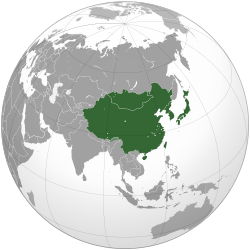
- Region: East Asia
- Area: 11,839,074 km2
- Population (2016): 1,641,908,531
- Density: 140/km2
- States: China, Japan, Mongolia, North Korea, South Korea, Taiwan
Geography
East Asia is the eastern subregion of the Asian continent, which can be defined in either geographical or ethno-cultural terms. Geographically and geopolitically, the region constitutes Greater China (Greater China consists of Chinese mainland, Hong Kong, Macau and Taiwan), Japan, Mongolia, North Korea and South Korea.
The region was the cradle of various ancient civilizations such as Ancient China, ancient Japan, ancient Korea, and the Mongol Empire. Major religions in East Asia include Buddhism (mostly Mahayana), Confucianism and Neo-Confucianism, Taoism, Ancestral worship, and Chinese folk religion in Mainland China, Hong Kong, Macau and Taiwan, Buddhism and Shintoism in Japan, and Christianity, Buddhism and Sindoism in Korea. Shamanism is also prevalent among Mongols and other indigenous populations of northern East Asia such as the Manchus.
At the present time East Asians comprise around 1.6 billion people, making up about 38% of the population in Continental Asia and 22% of the global population. The region is home to major world metropolises such as Beijing, Hong Kong, Seoul, Shanghai, Taipei, and Tokyo. Although the coastal and riparian areas of the region form one of the world’s most populated places, the population in Mongolia and Western China, both landlocked areas, is very sparsely distributed, with Mongolia having the lowest population density of a sovereign state. The overall population density of the region is 133 inhabitants per square kilometre, about three times the world average of 45/km2
Source: Wikipedia.
Central Asia
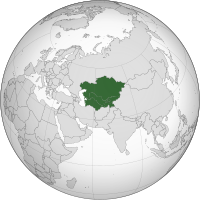
- Region: Central Asia
- Area: 4,003,451 km2
- Population: 69,787,760
- Pop. density: 17.43/km2
- Countries: Kazakhstan, Kyrgyzstan, Tajikistan, Turkmenistan, Uzbekistan
- Nominal GDP: $295.331 billion (2012)
- GDP per capita: $6,044 (2012)
Geography
Central Asia stretches from the Caspian Sea in the west to China in the east and from Afghanistan in the south to Russia in the north. The region consists of the former Soviet republics of Kazakhstan, Kyrgyzstan, Tajikistan, Turkmenistan, in addition to Uzbekistan. It is also colloquially referred to as “the stans” as the countries generally considered to be within the region all have names ending with the Persian suffix “-stan”, meaning “land of”.
By and large Central Asia has a population of about 70 million. It consists of five republics: Kazakhstan (18 million), Kyrgyzstan (6 million), Tajikistan (9 million), Turkmenistan (6 million), and Uzbekistan (31 million). Moreover, Afghanistan (35 million), which is a part of South Asia, is also sometimes included in Central Asia.
Demography and history
Otherwise Central Asia has historically been closely tied to its nomadic peoples and the Silk Road. It has acted as a crossroads for the movement of people, goods, and ideas between Europe, Western Asia, South Asia, and East Asia. The Silk Road connected Muslim lands with the people of Europe, India, and China. In time, this crossroads position has intensified the conflict between tribalism and traditionalism and modernization.
In pre-Islamic and early Islamic times, Central Asia was predominantly Iranian, populated by Eastern Iranian-speaking Bactrians, Sogdians, Chorasmians and the semi-nomadic Scythians and Parthians. After expansion by Turkic peoples, Central Asia also became the homeland for the Kazakhs, Uzbeks, Tatars, Turkmen, Kyrgyz, and Uyghurs. Due to this, Turkic languages largely replaced the Iranian languages spoken in the area.
From the mid-19th century until almost the end of the 20th century, most of Central Asia was part of the Russian Empire and later the Soviet Union, both Slavic-majority countries. Moreover, the five former Soviet “-stans” are still home to about 7 million ethnic Russians and 500,000 Ukrainians.
Source: Wikipedia. All quotes are on a Creative Commons Attribution-ShareAlike License. Date: 2018-06-22








